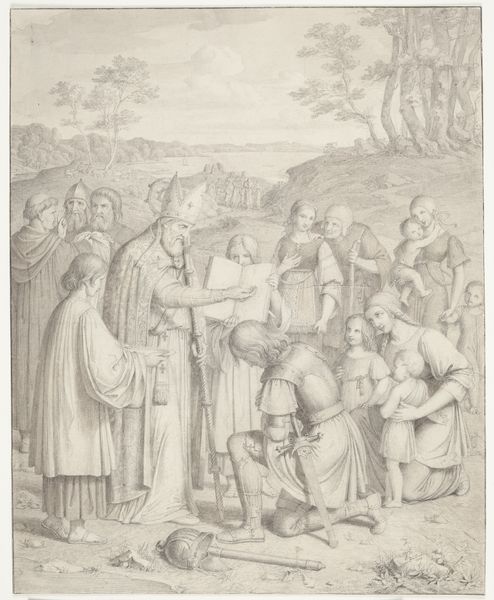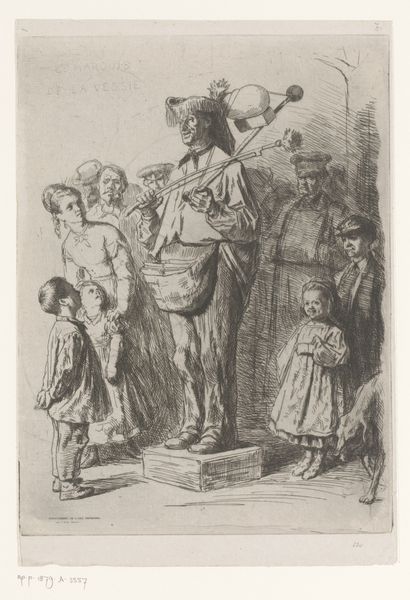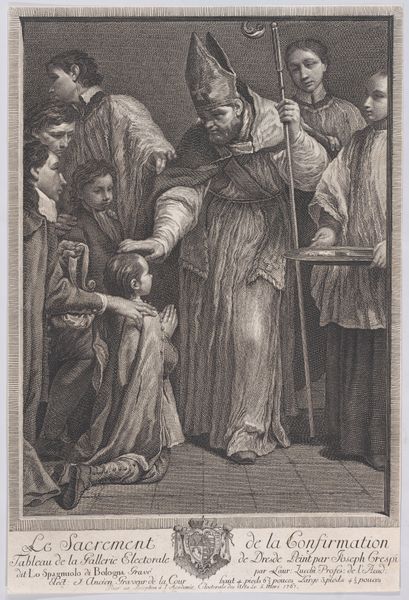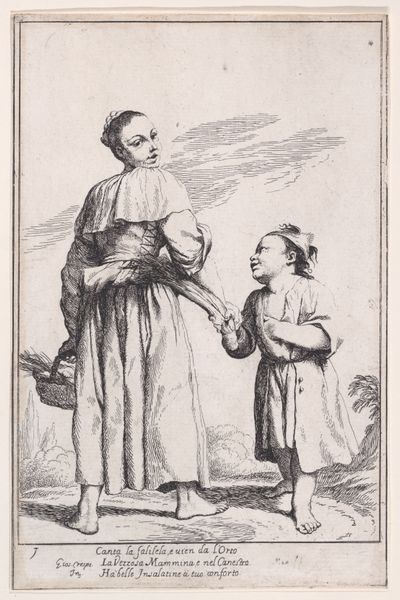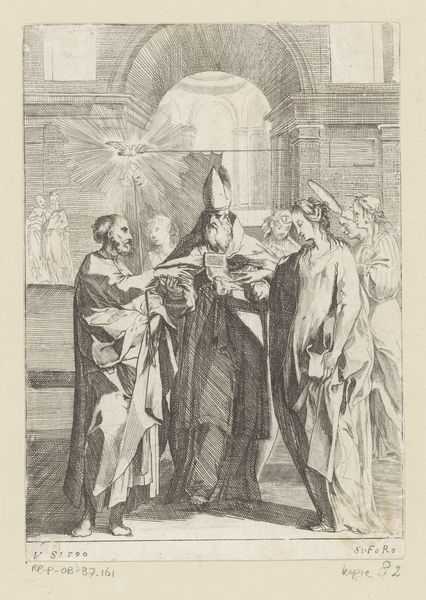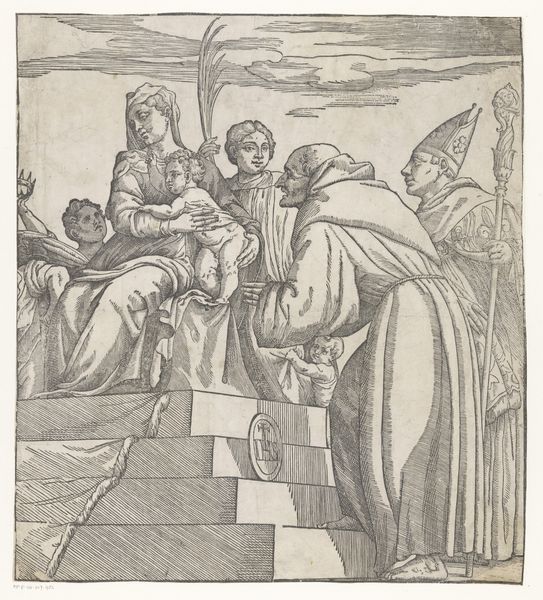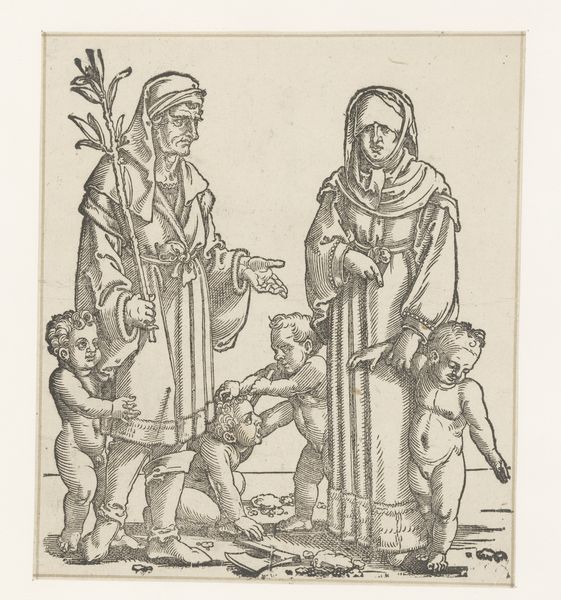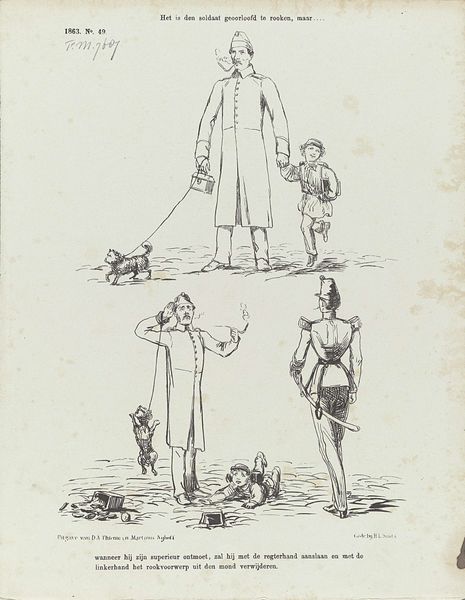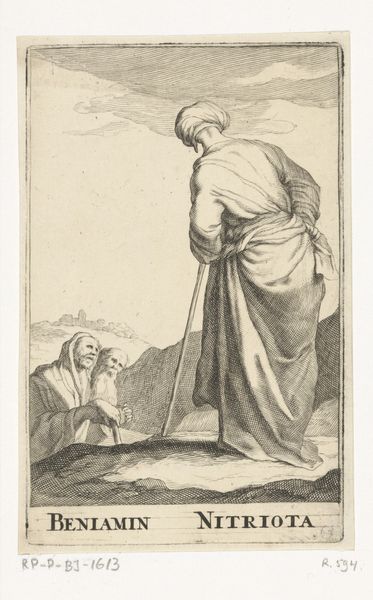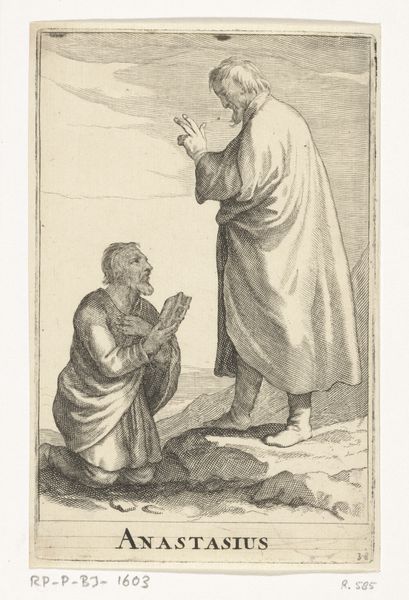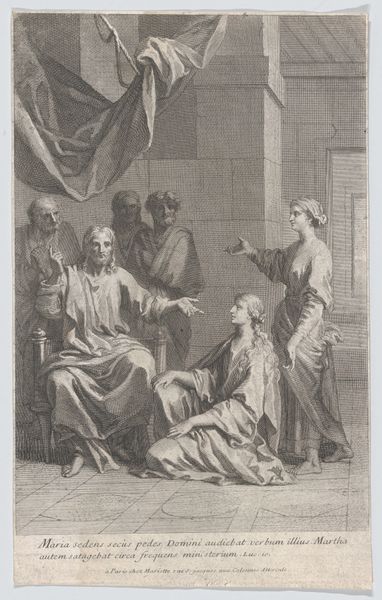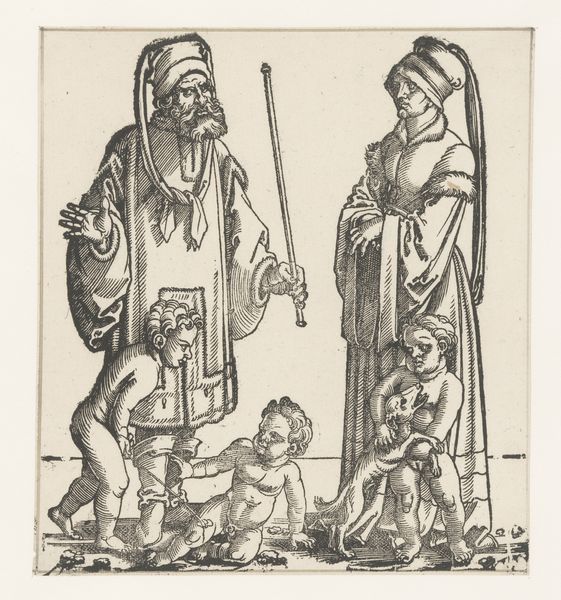
drawing, print, etching, ink
#
drawing
#
narrative-art
# print
#
etching
#
figuration
#
ink
Dimensions: 102 mm (height) x 71 mm (width) (bladmaal)
Curator: Immediately I feel the innocence emanating from this piece; there is something very comforting, perhaps maternal about it. What do you see? Editor: We're looking at an etching and ink drawing called "Christ and the Children," attributed to F. Hendriksen and thought to have been created sometime between 1847 and 1938. I think it is currently held at the SMK, the National Gallery of Denmark. For me, this work is interesting as a demonstration of power dynamics, specifically as regards the historic, gendered implications surrounding "purity" in religious settings. Curator: Ah, an unexpected interpretation! I love that the spareness of the etching almost mimics a child’s drawing, a sense of naïve purity mirrored in the technical execution. Editor: That stylistic choice, as you describe it, also reinforces Christ’s position of power here. The children, sketched with less detail and literally placed lower, become metaphors for obedience. And we cannot ignore how often depictions like this become tools for cultural indoctrination, especially around patriarchal ideas. Curator: But isn't there an overwhelming tenderness, the slight incline of Christ's head suggesting a genuine affection and care. The fact he's even there amongst children speaks volumes, suggesting humility not dominance? Editor: Tenderness exists, certainly. And that tenderness, like images of a loving parent, becomes a potent mechanism for social control. Art is rarely innocent, after all. By showcasing this interaction within this context, do we then fail to discuss that not every adult space, including religious spaces, has always been safe or equitable for all children? Curator: Food for thought, certainly! This conversation highlights just how richly layered a seemingly simple image can be! Editor: Absolutely, by juxtaposing personal and political, this image of faith opens pathways to reflect on safety, responsibility and cultural expectation across diverse social spaces and artistic representation.
Comments
No comments
Be the first to comment and join the conversation on the ultimate creative platform.
